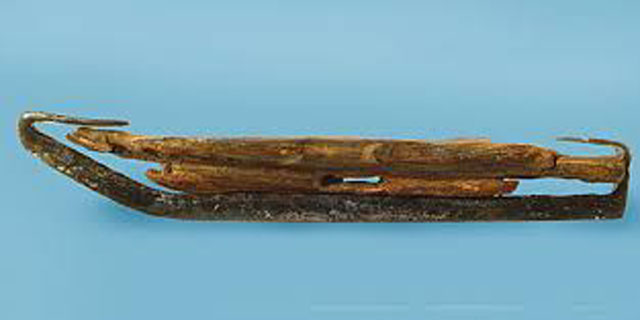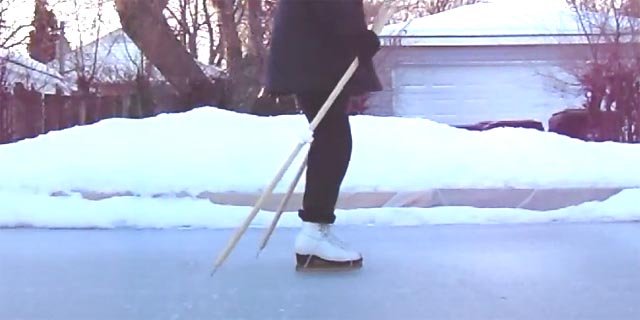The first wooden skates
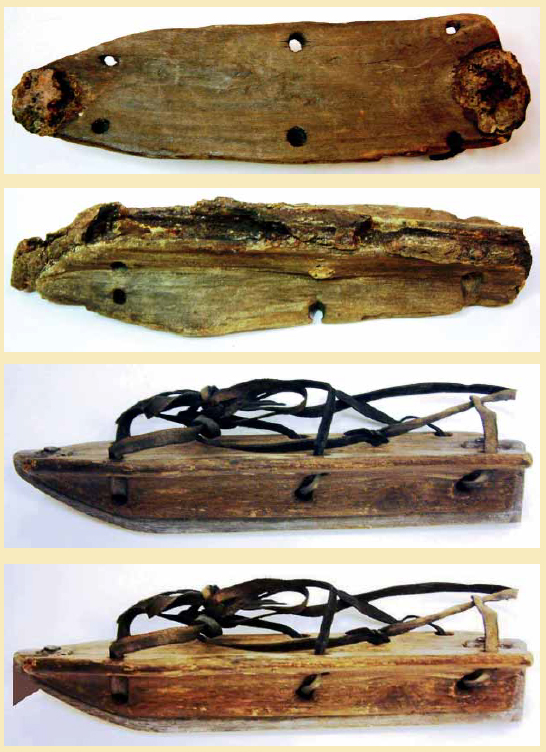
Author Wiebe Blauw, 2001
Translation Cheryl Richardson, 2018
To create a skate, technical knowledge about the use of wood and iron is necessary. The use of wood and the processing of wood is very old. Iron has been known since 1000 BC. Both the Egyptians, the Greeks and the Romans used iron (weapons). In the seventh and eighth centuries iron ore was extracted from the Veluwe and processed into swords. Only after 1,000 in Western Europe was iron used in the applied arts, especially when making iron fittings for crates and doors.
Also in the eleventh century, keys were made entirely of iron. It is conceivable that already around 1,000 AD, a piece of iron would serve as a sliding object as were wooden bars and bones. Gradually, or by chance, insight was gained that a narrow piece of iron has a greater gliding capacity than a wide piece. The final attachment of a narrow piece of iron to a wooden foot pile may have originated more or less at the same time in different places and has subsequently been applied generally.
No accurate sources are available about the origin of the wooden skate with an iron sliding part. Through the combination of data from archaeological research and the technical knowledge about the application of iron and wood, the beginning of the wooden skating era can be traced.
A limited number of archaeological finds are known in the Netherlands, namely from Amsterdam, The Hague, Dordrecht, Haarlem and Rotterdam. In other late medieval cities such as Alkmaar, Amersfoort, Delft, Deventer, Schoonhoven, Utrecht, Vlaardingen and Wijk bij Duurstede, no skates or skate parts were found during excavations. The earliest finds of wooden skates date from the first half of the 13th century and originate from Amsterdam and Dordrecht. The date is determined on the basis of secondary findings.
Archaeological foundations of skates or skate parts in the Netherlands between 1225 and 1800
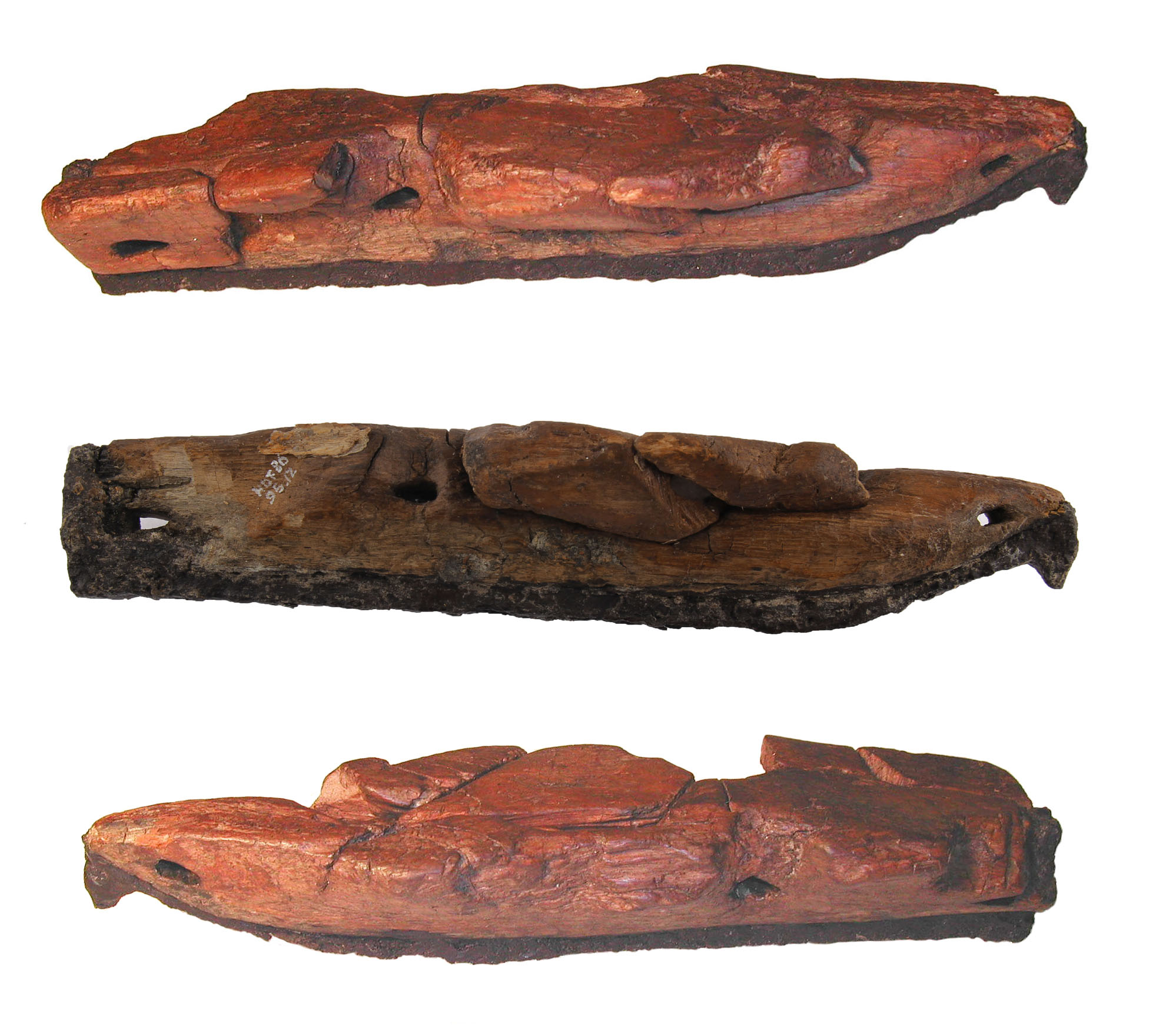
(Dept. Archeology Municipality of The Hague)
Archaeological finds were made in old city centers where habitation was dense and where new habitation on top of the old had taken place over the centuries. The finds often come from the banks of old city canals. In areas where no buildings have been or are no longer known, hardly any archaeological research is done. On the mounds in Friesland and Groningen, where many bones/gliders (?) are found, no skate finds are known. It is also possible that soil in which ice skates may have to be kept, was not suitable for centuries-long conservation, as a result of which both the wood and the iron of the skates have been destroyed.
An important condition for preservation is that the oxygen be sealed so no rust or rotting can occur. For the preservation of the iron objects, it is favorable if the soil layer is covered by water. Wood is retained for the longest time in acidified peat soil.
The skates from Amsterdam and Dordrecht show a lot of similarities. Both pairs consist of a simple straight constructed wooden foot pile. On the underside there is a slot in which an approximately 8 mm wide iron shank is placed. The shank is bent around the stack at the front and back so that the shank remains attached to the stack.
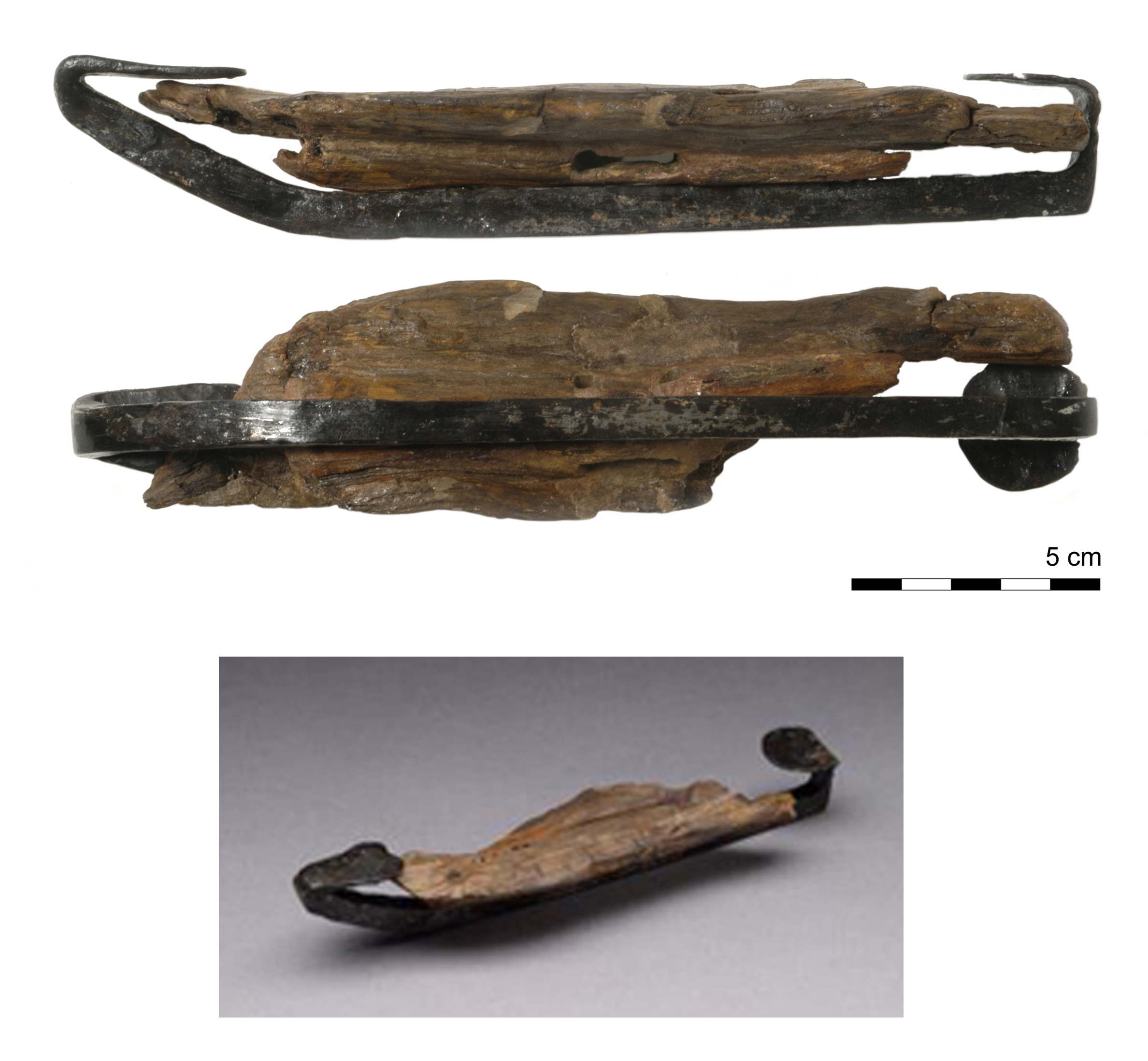
Amsterdam
The pair at right and below from Amsterdam were found in the vicinity of a smithy, which was located just outside the walls of the Kasteel van de Heren van Aemstel. There is a peg on the top of the shank that sticks into the wood, making shifting impossible.
The Hague
In The Hague, a skate was found during the reconstruction of the Binnenhof complex in 1986 and 1987 which probably dates from the 14th century. The area was the former northern court of the count's residence. It is striking that the iron at the end of the front tips down similar to picks. The foot pile has three belt holes and is made of poplar wood.
Rotterdam
In Rotterdam, a late 15th, early 16th century loose skating iron was found, which, like the Hague skate, has a downward pointing outlet. The back of the shank is bent upwards around the wood. This vertical heel piece has a hole through which a nail could be driven into the wooden foot pile. The skating iron has emerged at the St. Jacob site during the construction of the railway tunnel under the Meuse. In the past, the Rotte, which at that time had a broader mouth, ran near the St. Jacob site. The iron has probably ended up as waste. A second skate-iron found on the spot dates back to the first half of the 17th century, but has been seriously affected by rust. It is possible of a curling skate.
Haarlem
A Haarlem find shows a wooden footstep from the first half of the 17th century. The wood comes from the black alder. It is a skate with a wood-covered neck.
Although there are a small number of archaeological finds between 1200 and 1600, it can be assumed on the basis of previously discussed texts and images that these fairly primitive skates have already been used quite commonly and that they provide insight into the first skating models.
Source
The article 'The first wooden skates' is written by Wiebe Blauw, member of De Poolster.
It has previously appeared in his book 'Van Glis tot Klapschaats' (2001)
Read More
More articles about the development of the skate
De onderdelen van de schaats (not yet in English)
Materiaal, constructie en montage (not yet in English)
Schaatsmodellen (not yet in English)
Tijdlijn modelontwikkeling van de schaats (not yet in English)
Modelontwikkeling in schaatsen op wapen De Raet (not yet in English)
